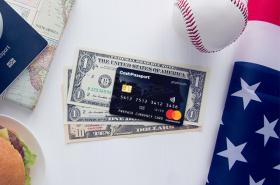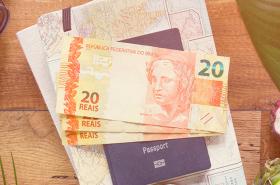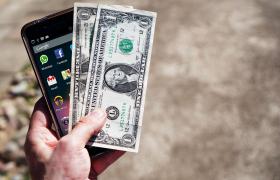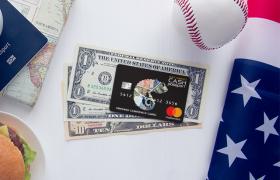Quick Contact

18th July 2017
New Zealand has very low levels of counterfeiting by international standards, but that doesn't mean it doesn't exist. Every now and then the Police issue a warning for you to check your wallet - not because your money has gone missing, but because you may have become the victim of counterfeiting.
That is why our banknotes feature many security features designed to prevent forgeries. But, do you know what these are? Would you be able to spot a fake banknote against a real one?
To help you avoid becoming a victim of banknote forgery, we think its super important for you to know how to spot a fake note. Have a look at the video below, or read the following 10 security features you can look for if you suspect you're being given a counterfeit note.
#1. Check the Window
With a genuine banknote, inside the large clear window, you will see a hologram of a fern and a map of New Zealand. It also contains the image of the same bird that is featured on the left hand side of the note. The denomination of the note will be embossed below the hologram.
#2. Water Resistance
It may seem counter-intuitive to dunk your money in water, but New Zealand banknotes are made of a plastic substance called polymer, and they are water resistant. So, if you were to do this with a genuine banknote, there should be no water damage, and no ink blotches or runs.
#3. Find the Microprint
If you have a magnifying glass, you should be able to spot microprint on any real banknote - on the large numeral, and on the front of the note on the foil inside the window, and on the back between New Zealand and Aotearoa.
#4. The Real Feel
Polymer banknotes have raised printing, which you can feel if you run your fingers over it.
#5. Serial Safety
Each New Zealand banknote has an individual serial number printed on it both horizontally and vertically, and these numbers match exactly. If the serial numbers are missing, don't match or you have several notes with the same numbers, then some or all of the notes could be fakes.
#6. UV Glow?
Most commercial papers used in forgeries will glow if you put them under a UV light, but the New Zealand notes use a special ink which looks dull under UV. You will only find specific features glow brightly - the front of a genuine banknote will have a fluorescent patch showing the denomination of the note on it.
#7. Fuzzy Images
On genuine banknotes, the images should be sharp and well defined, not fuzzy and washed out, so this is another aspect you can look for.
#8. Light it Up
When you hold a genuine banknote up to the light, the irregular shapes on the front and the back of the note should combine like puzzle pieces to show the note's denomination. Clever hey!
#9. Tilting Change
If you tilt a genuine banknote, the colour of the bird changes!
Polymer is a tough substance, and you should not be able to start a tear on a genuine polymer-made banknote. Counterfeits are usually made of paper, so you should easily be able to tear a fake note.
These are the main security features of the new Series 7 banknotes, but Series 6 is also still in circulation alongside the new notes. They share quite a few of the same security features, like using polymer and water-resistant ink, but they do have a few unique features too:
- Each note has two see-through windows - one is oval in shape and has the denomination of the note embossed on it, and the second one is a curved fern shape
- If you hold a note up to the light, you should see a shadow image of H.M. Queen Elizabeth II next to the oval window
- Above the fern-shaped window is another fern facing in the opposite direction. When you hold the note up to the light, this fern should match up perfectly on both sides, making the white part of the fern coloured
Now that you're aware of the security features that are used on both the Series 7 and the Series 6 banknotes, if you do think you're being given a fake note, you can do some checks of your own.
You have the right refuse to accept the note(s) if you suspect that it a fake. If this happens, or if a counterfeit note makes it into your possession, you should notify the Police straight away. By checking your money, and by involving the Police, you can help New Zealand keep its low track record of counterfeit crime.
Currency and Counterfeiting statistics and information taken from the website of the Reserve Bank of New Zealand: http://www.rbnz.govt.nz/-/media/ReserveBank/Files/Publications/Factsheet...
This blog is provided for information only and does not take into consideration your objectives, financial situation or needs. You should consider whether the information and suggestions contained in any blog entry are appropriate for you, having regard to your own objectives, financial situation and needs. While we take reasonable care in providing the blog, we give no warranties or representations that it is complete or accurate, or is appropriate for you. We are not liable for any loss caused, whether due to negligence or otherwise, arising from use of, or reliance on, the information and/or suggestions contained in this blog.











